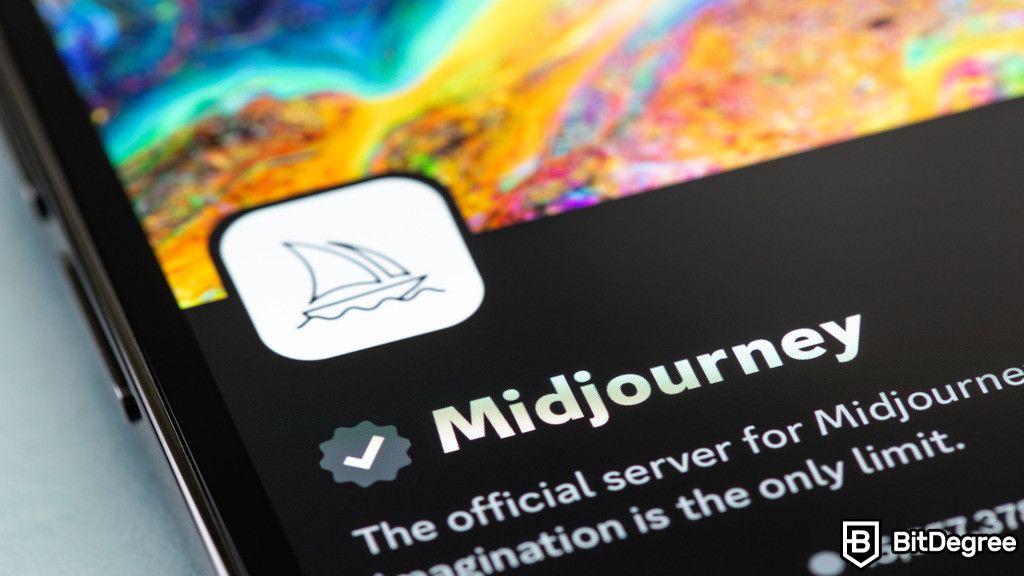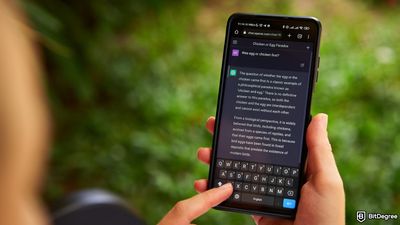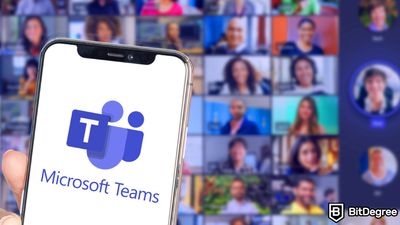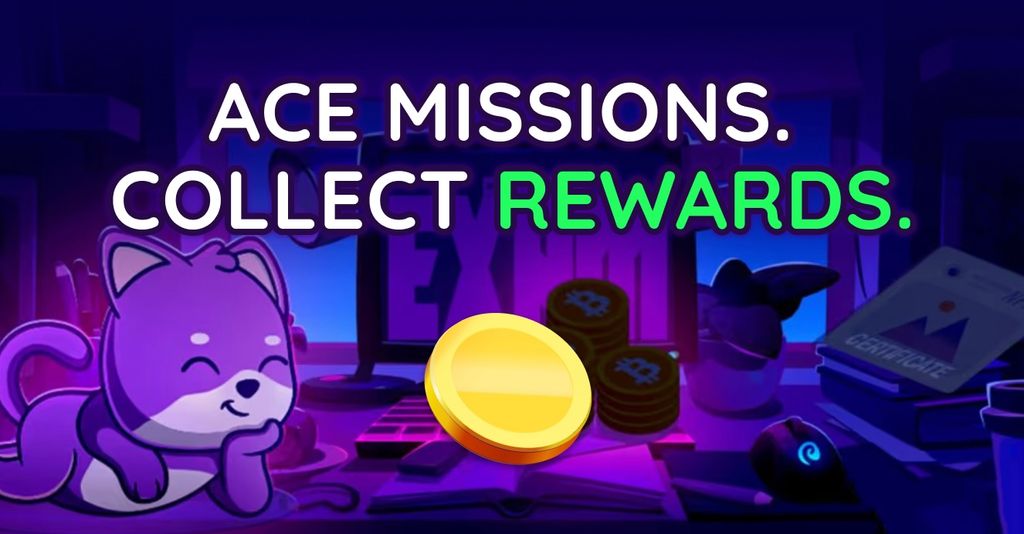Free Airdrop Season 7 is LIVE! Answer fun questions or do simple tasks to earn rewards from the $30K BitDegree prize pool. Participate Now ! 🔥
Welcome to a space where your wildest visual dreams come to life with AI's touch. Right here, you'll find out how to use Midjourney, an AI tool reshaping the digital art scene.
At the meeting of technology and art, Midjourney proved that human creativity and artificial intelligence can evolve side by side. Whether you're an experienced artist or just starting, Midjourney can be your new helping hand.
Did you know? Midjourney can transform even the most abstract ideas into actual art. Phrases like "the sound of color" morph into vibrant, realistic artworks, and that's just a fraction of its capabilities.
Adding a new layer, ElevenLabs' voice synthesis tool brings your creations to life with original voices. Your art won't just be seen; it can also be heard.
Bear with me and unlock the secrets of Midjourney. In the end, I will share the best learning material that will help you master AI art generation. So, are you ready to find out what is Midjourney and how does Midjourney works?
Table of Contents
- 1. How To Use Midjourney: Getting Started
- 2. Creating Your First Image
- 2.1. Step-by-Step Instructions On Using Midjourney Commands
- 2.2. Understanding the Image Generation Process And GPU Time
- 3. Advanced Features and Techniques
- 3.1. Upscaling Images and Using the Zoom-Out Feature
- 3.2. Blending and Modifying Images with Custom Commands
- 4. What is Midjourney: From AI Experiment to Art Revolution
- 5. Creative Use Cases
- 6. The Future of AI-Generated Artwork
- 7. How to Learn Midjourney From Scratch: The Best Generative AI Learning Courses
- 7.1. Midjourney Mastery: Create Visually Stunning AI Art (Enroll Here)
- 7.2. Midjourney for Beginners: Craft an Exquisite Piece of AI Art (Enroll Here)
- 7.3. Generative AI Fluency (Enroll Here)
- 8. Conclusions
How To Use Midjourney: Getting Started
Let's start this Midjourney guide by setting up a Discord account. Follow these steps to help you through the process:
Latest Deal Active Right Now:Equip your entire team with this 30% QuillBot Premium discount code! Enhance your team's writing efficiency today.
Step 1: Sign up for a Discord account:
- Open the Discord homepage, and look for the "Log In" button, located at the top right corner of the page.

- Click on it to start the registration/login process.
Step 2: Log in to your Discord account:
- Once you finish the sign-up process, open Discord and log in using the email and password you registered with.
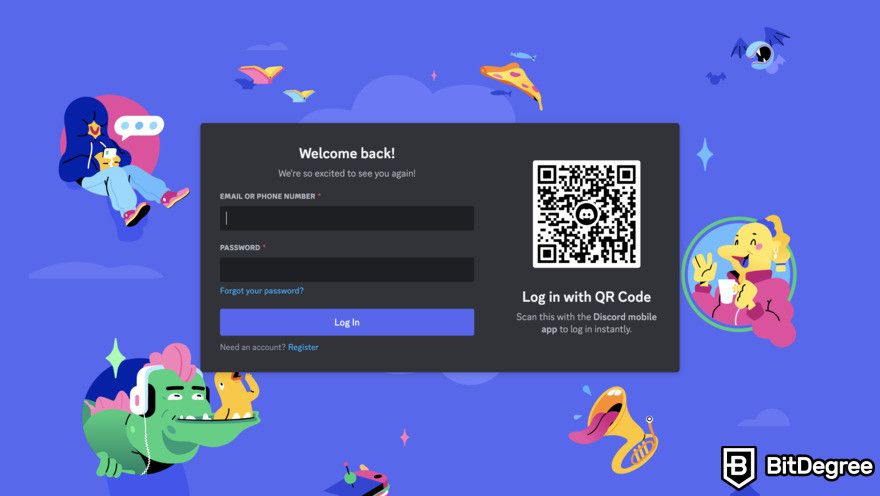
- You can also download the Discord app directly from here.
Step 3: Access Midjourney
- With your Discord account set up, the next step is to access Midjourney.
- You need to join the Midjourney Discord server. This is usually done through an invitation link.
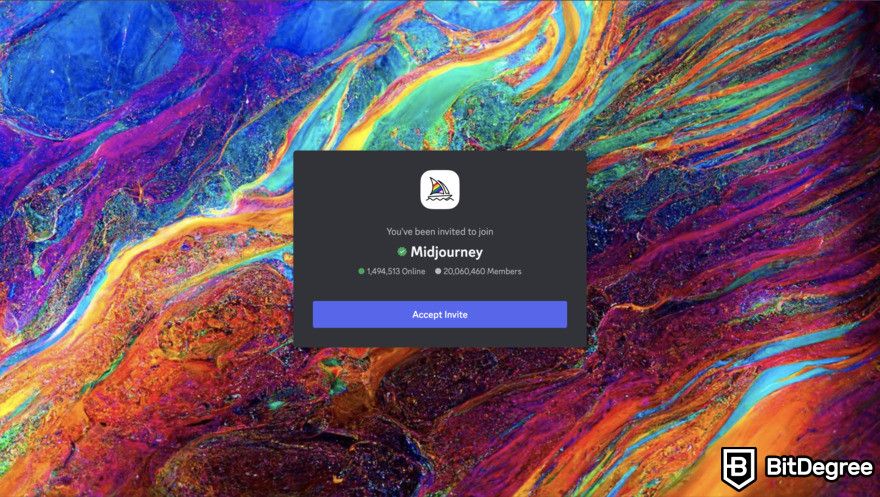
- Accept the invite to join the server.
Step 4: Familiarize yourself with the Midjourney server.
- Once you’re on the server, take some time to familiarize yourself with its layout.
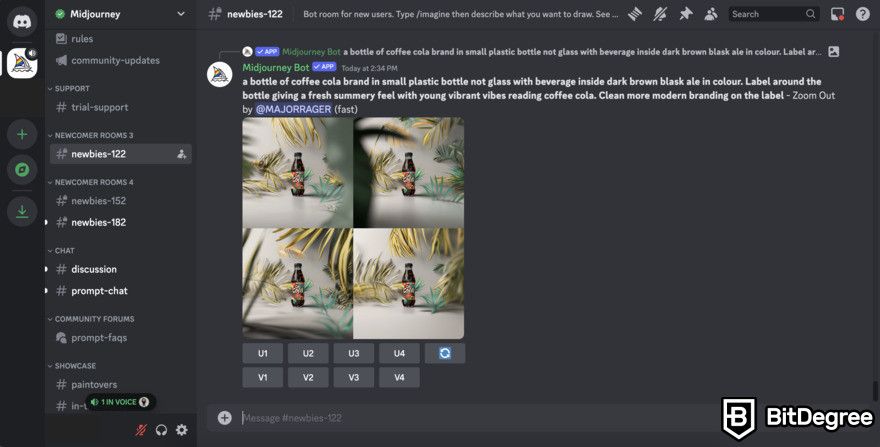
- Check out the different channels, especially the rules and getting-started; they will provide more insights into how Midjourney works and how to use the Midjourney server.
Those are the first steps to knowing how to use Midjourney AI. Remember, the Midjourney community on Discord is quite active and helpful, so don't hesitate to seek assistance if you encounter any difficulties.
There are four subscription options offered by Midjourney: Basic, Standart, Pro, and Mega. The Basic plan provides access to the base features of the platform, such as a limited number of generations and fewer simultaneous jobs. This plan is particularly well-suited for newcomers who wish to explore and experience how Midjourney works.
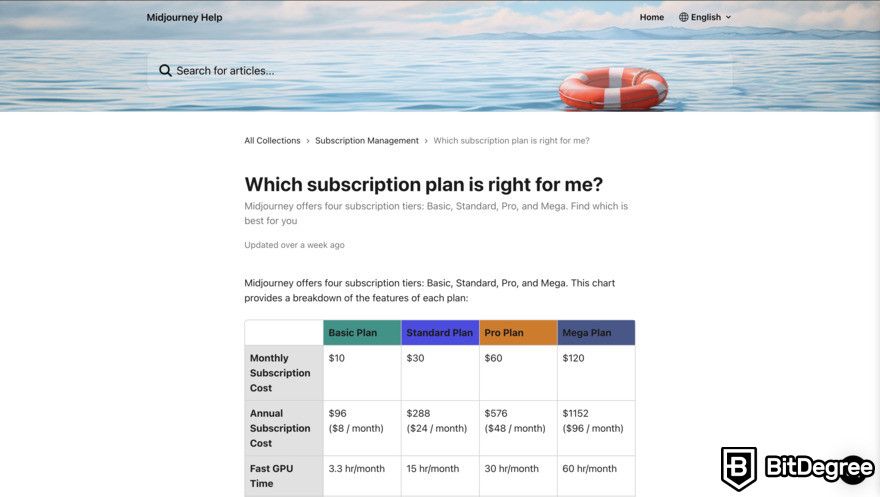
For those looking for more advanced features and benefits, the standard and pro plans are available at a reasonable, higher fee. These plans offer additional perks, such as stealth image generation and the ability to generate multiple outputs simultaneously.
All in all, Midjourney offers a range of subscription plans to suit different needs and budgets. Here's a simplified overview of each plan:
| Basic: $10/month | Standard: $30/month | Pro: $60/month | Mega: $120/month |
|---|---|---|---|
| Limited to ~200 generations per month | 15 hours of "fast" image generation | 30 hours of "fast" image generation | 60 hours of "fast" image generation |
| 3 simultaneous "fast" jobs | 3 simultaneous "fast" jobs | 12 simultaneous "fast" jobs | 12 simultaneous "fast" jobs |
| Unlimited "relaxed" generations | Unlimited "relaxed" generations | Unlimited "relaxed" generations | |
| "Stealth" image generation | "Stealth" image generation |
Table: plan overview
Each plan is designed to serve different levels of usage, from basic to more intensive needs. The higher-tier plans offer more generation hours, additional features like stealth image generation, and increased capacity for concurrent jobs. One possible drawback of Midjourney could be a lack of free trials. However, if you change your mind, they offer a refund for those who haven't used more than 20 minutes of image generation time.
Creating Your First Image
Midjourney offers an intuitive and powerful way to generate images using the "/imagine" command. Here's a step-by-step guide on how to use Midjourney to create your first image. Along with tips for writing effective prompts and understanding the image generation process and what is GPU time.
Step-by-Step Instructions On Using Midjourney Commands
Let’s start by creating your first-ever AI image in the Discord server. Then, I will show you how to make your artwork better and bigger.
Step 1: Begin by accessing one of the channels for image generation in the Discord server (they are usually called #general-1, #general-2, or something similar):

Step 2: Type the "/imagine" command into the input field:

Step 3: After the "/imagine" command, type in your descriptive prompt.
This prompt should convey the image you want to generate. For example, "/imagine a rainy futuristic city at night." This is where you express what is Midjourney AI art that you envision. Press "Enter" to submit your command:

Midjourney will start processing your request. It may take a few moments.
Step 4: Once images are generated, they will be displayed for you to review.
You can upscale one of them ("U" buttons) to see more details or make more variations ("V" buttons). If images do not look good, you can easily regenerate a new batch until you are happy with the result:

In this case, I loved the first image, so I clicked the "U1" button:
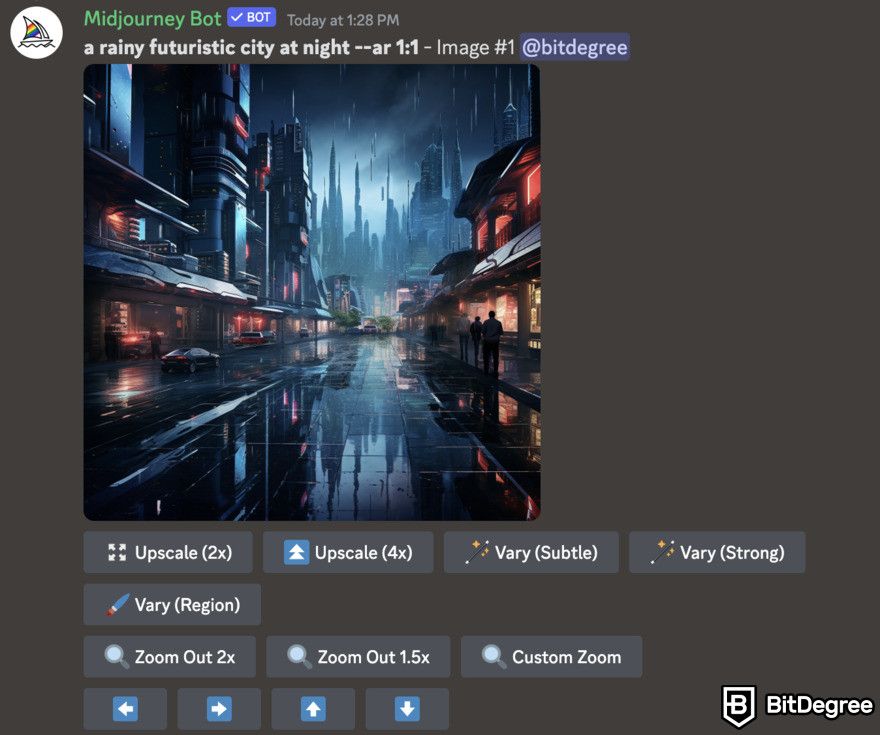
Once the upscaling process is completed, you will see a variety of other options: upscale more, vary the image, zoom out, and expand it in any direction.
"Vary (Strong)" and "Vary (Subtle)" options are the ones that make different versions of zoomed-in pictures. The "Vary (Region)" feature lets you tweak a certain part without editing the whole image.
Midjourney offers a variety of post-generation features, however, knowing how to write well-structured prompts is a must. Here are some tips for you to get started:
- Be descriptive. The more detailed your prompt, the better Midjourney can understand and visualize your concept. Include specifics about colors, style, mood, setting, and key elements.
- Use inspirational references. Mentioning well-known artworks, styles, or artists can guide the AI toward your desired aesthetic. A key aspect of Midjourney AI art.
- Balance detail with flexibility. While details are good, too many specifics can constrain the AI. Leave some room for creativity and interpretation.
- Experiment with variations. Don’t hesitate to try different phrasings or add or remove details to see how they affect the outcome.
Understanding the Image Generation Process And GPU Time
GPU (Graphics Processing Unit) time refers to the computational power used to generate your images. As the complexity of images increases, the demand for GPU time also rises. This is because intricate and detailed images necessitate additional computational resources from the GPU to process and render them accurately.
When you submit a prompt, the AI algorithm, powered by a GPU, analyzes the text and translates it into visual elements, composing them into a clear image. Be mindful that often, there is a trade-off between the quality of the generated image and the processing time.
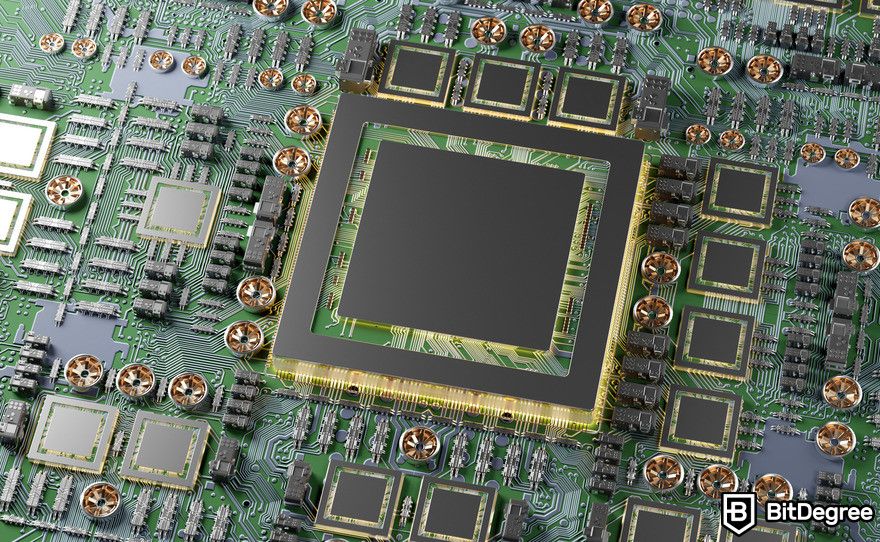
More detailed or complex prompts will take longer to process, using more GPU time. Different subscription plans offer varying amounts of GPU time; choose according to your needs.
By following these steps and tips, you can effectively learn how to use Midjourney to create stunning AI-generated images, whether you're a beginner or an experienced user. Remember, experimentation is key, and each prompt can lead to uniquely fascinating results.
Advanced Features and Techniques
As seen before, Midjourney offers a suite of advanced features and techniques that allow users to explore image variations, enhance quality, upscale, and blend or modify images using custom commands. These features provide a more profound level of control and creativity in the image-generation process.
Digital image processing has witnessed significant advancements, particularly in the context of image variations and enhancements. Image variations refer to the alterations made to an image to achieve different aesthetics or to highlight certain features.
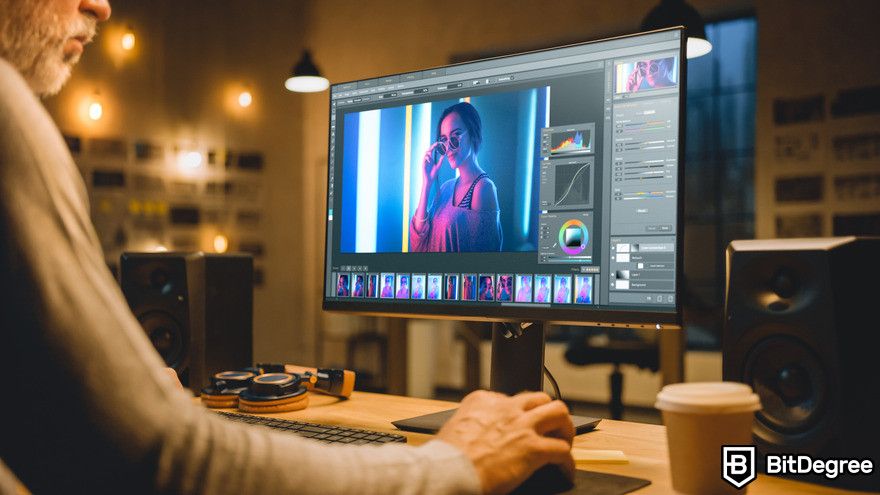
These can include changes in color saturation, contrast, brightness, and sharpness. Enhancements are techniques for improving the quality of an image. That can involve noise reduction, the correction of photographic errors, etc.
Midjourney uses multi-layer algorithms to automate these processes, offering many options to modify images according to your needs. The integration of machine learning and AI has enabled the automatic adjustment of images based on contextual understanding, significantly reducing the manual effort required in traditional image editing.
Upscaling Images and Using the Zoom-Out Feature
Upscaling is one of the most used Midjourney features, particularly important in digital design where high-resolution images are essential. Upscaling refers to the process of increasing the resolution of an image while maintaining its clarity and detail. That’s particularly challenging, as increasing the pixel count of an image can often lead to a loss in quality.
Midjourney offers two options for upscaling images: 2X and 4X. While 2X upscaling is quicker, the photo quality will not be as sharp as it would be with the 4X method.
Advanced upscaling techniques involve using AI algorithms that can intelligently add pixels to an image based on the surrounding pixel information, enhancing image resolution without compromising its quality. The zoom-out feature complements upscaling by allowing users to broaden the perspective of any image without stretching it or losing quality.
Blending and Modifying Images with Custom Commands
The "/blend" command lets you upload and merge up to five images to create a composite that retains elements of each original image. It can be used to create surrealistic effects, superimpose objects onto different backgrounds, or combine the best elements of multiple shots into a single image.
To try the blending command, simply type "/blend" into the input field and choose images that you want to combine:
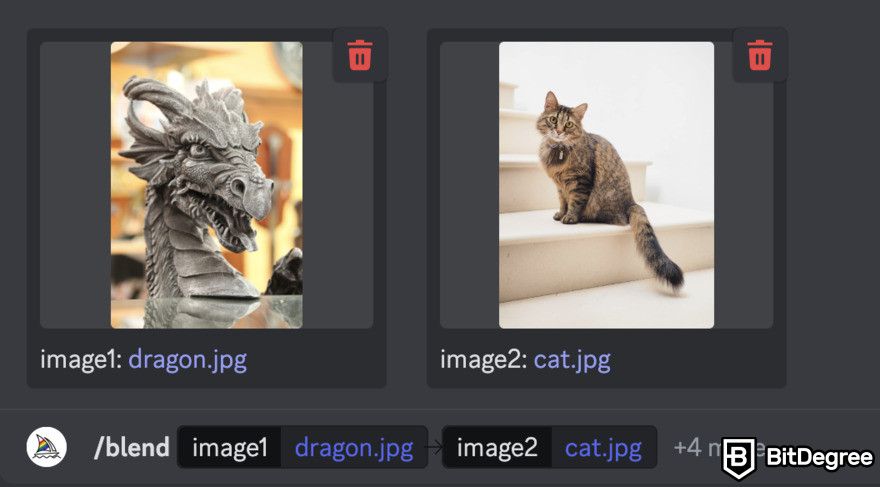
The results I got after blending cat and dragon statue images were:
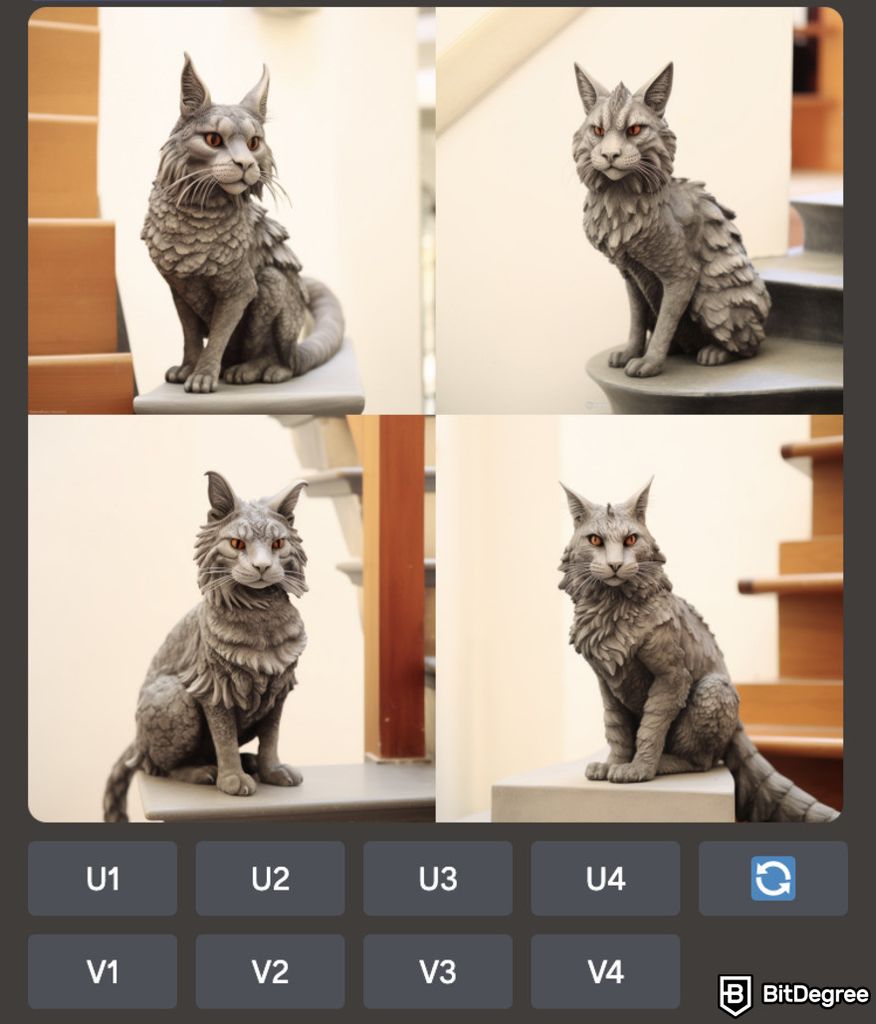
The results show what is Midjourney AI art: often spectacular in quality, though composition can be refined using other features like upscale and variation.
Moreover, you can also configure general Midjourney parameters: model version, variation, generation speed, and many more. To access them, simply use the "/settings" command.

Let’s quickly overview each of them:
Model version dropdown:
Use the latest model (default) - automatically select the newest version of Midjourney for image generation. Specific model versions - allows you to choose an older version of Midjourney for different aesthetic results or features.
Stylize parameters:
Stylize low (--s 50) - generates images closer to the literal prompt but with minimal artistic flair. Stylize med (--s 100) - balances literal interpretation and creative style. Stylize high (--s 250) - emphasizes artistic elements more strongly, potentially deviating from the prompt. Stylize very high (--s 750) - maximizes artistic interpretation, possibly at the expense of prompt accuracy.
Public and stealth modes:
Public mode - your creations are visible to others in the Midjourney community. Stealth mode - keeps your creations private, not visible to the community.

High and low variation mode:
High variation mode - generates images with significant differences, offering higher interpretations of the prompt. Low variation mode - produces images with subtle differences, maintaining a closer consistency to the original prompt.
A bunch of different modes:
Turbo mode - speeds up image generation, possibly at a slight cost to quality. Fast mode - offers a balance between speed and quality. Relax mode - focuses on higher quality generation, taking more time. Raw mode - applicable to versions 5.1 and later. This setting reduces the default influence of Midjourney, offering a more 'raw' or unfiltered interpretation of your prompts. Remix mode - allows modification of an existing image by changing prompts, parameters, or aspects, using the original composition as a base.
Sticky style: Saves style settings, remembers your last used --style code, applying it automatically to future prompts until changed or deselected.
Reset settings: Return to defaults, clear any custom settings or preferences, reverting to the default options.
To wrap up, you learned what is Midjourney, you can control image tweaks, upscale photos, and blend elements in a few ways to make your art unique. Now, let's shift gears to the platform's history and its impact on the art world.
What is Midjourney: From AI Experiment to Art Revolution
Midjourney, a marvel of AI art, didn't emerge overnight. Its roots trace back to the year 2021. Initially, it started as a project aimed at exploring the boundaries of AI's creative potential, gradually becoming a progressive tool that makes art creation using AI pretty simple. Knowing how to use Midjourney is crucial for anyone seeking to harness AI to create art.
Unlike traditional digital art tools, Midjourney is focused on artificial intelligence to interpret and visualize human prompts in unique ways. This development marks a significant milestone in the history of digital art. Art creation is no longer limited to human hands but is a collaboration between humans and AI's capabilities.
While there are other notable names in this arena, like DeepArt and DALL-E, Midjourney sets itself apart with its unique approach to image generation. Unlike tools that focus solely on replicating styles or enhancing images, Midjourney is all about creating new, imaginative visuals from textual descriptions.
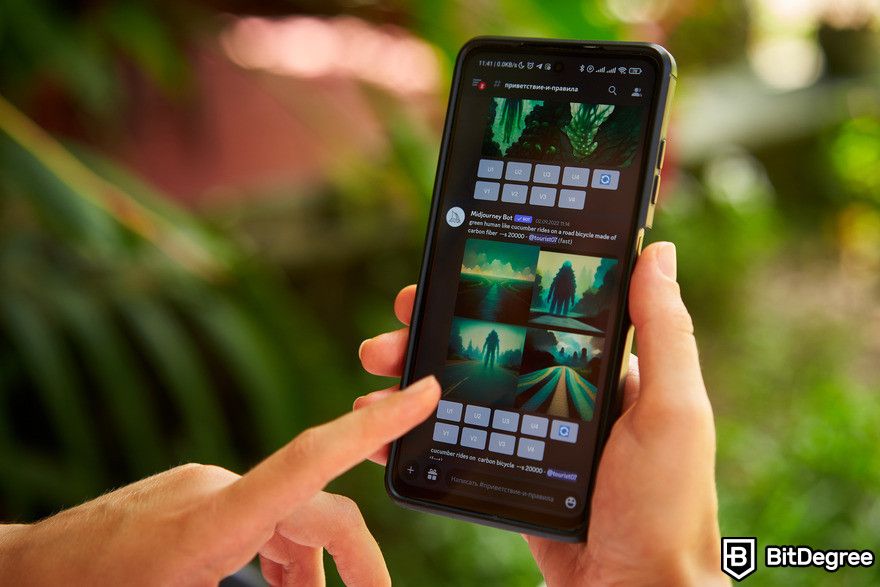
The tool's algorithm is adept at understanding nuanced prompts, making it more versatile compared to others that might require more straightforward or specific inputs. This allows users from any background, irrespective of their technical know-how, to experiment and create with Midjourney.
Whether it's a surreal landscape, a futuristic cityscape, or an abstract concept, Midjourney translates words into pieces of art with remarkable accuracy and artistic style.
Another standout feature is its iterative process. You can refine the prompts or tweak parameters, guiding the AI to produce closer approximations of the expected art.
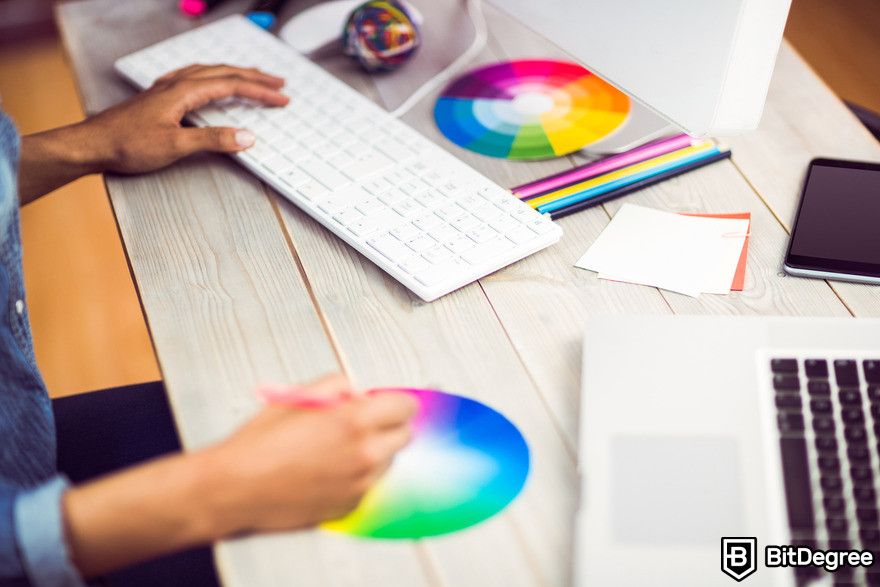
Midjourney also excels in its community-driven aspect. It not only allows individual creation but also fosters a community where artists can share, collaborate, and inspire each other. This adds an exciting layer to the Midjourney experience.
To understand Midjourney better is to recognize its role as a catalyst for digital art. Let’s explore how to use Midjourney AI in different creative ways.
Creative Use Cases
Since its debut in 2022, due to tools' versatility, Midjourney has been creatively used across many sectors. In this chapter, I will overview some of the most popular cases.
Before we go any further, let's clarify a tricky topic: Can AI-generated content be used legally for commerce?
The legality of AI-assisted creation depends on various factors, such as its purpose, nature, and usage location. For example, using Midjourney to design book covers or T-shirts may be permissible under certain rules, but it can also border on copyright infringement.
Here's a tip for creators and businesses using Midjourney or similar AI tools: Stay updated on your region's AI and intellectual property laws, and consult legal experts to ensure compliance in this matter, if needed.

With the legal context in mind, we can start exploring what people are using Midjourney for:
Character design for games and movies: Midjourney is a popular tool for creating concept art in the video game industry. It generates unique character designs, environmental art, and other assets that can be used directly in games or serve as inspiration. In the movie industry, Midjourney helps visualize characters, settings, and props. This aids storyboard artists and directors by providing a visual foundation for their work. Essentially, Midjourney AI art is all about bringing creative visions to life.
Illustrations for websites, books, and articles: Authors and publishers are using Midjourney to create compelling illustrations for books, especially in genres like fantasy, science fiction, or children's literature. For academic or business presentations, Midjourney is used to generate engaging visuals to sweeten the communication.

Clothing and merchandise design: Designers are leveraging Midjourney to brainstorm and visualize designs for t-shirts, dresses, and other apparel. It is also used to create artwork for a wide range of merchandise, like mugs, posters, and phone cases, particularly for niche markets.
Marketing and promotion materials: In digital marketing, Midjourney produces creative and eye-catching graphics for social media posts, banners, and digital ads. For traditional print advertising, Midjourney is being used to design unique visuals for posters, flyers, and billboards.
Midjourney is a powerful tool in the hands of creative people. Its ability to generate high-quality, unique visuals rapidly can significantly enhance the creative process, from initial concept development to final product design. As AI technology continues to evolve, the potential applications of tools like Midjourney are likely to expand, further integrating into and transforming the creative industries.
The Future of AI-Generated Artwork
The future of Midjourney is set to experience significant advancements, particularly in user interface intuitiveness. This evolution suggests a shift towards interfaces that enable artists and designers to interact with AI more naturally and creatively[1]. Furthermore, innovations in machine learning algorithms are expected to enhance the platform's ability to interpret complex artistic instructions, leading to more subtle and refined outputs.
The potential integration of Midjourney with technologies like virtual reality (VR) and augmented reality (AR) could open new possibilities for art experiences[2]. This synergy, as highlighted in the research on AI-based image creation for 3D visual modeling, could create a more interactive and engaging platform. Artists might not only generate art but also manipulate and experience it in a three-dimensional space, enhancing the creative process.

One of the primary ethical considerations in AI-generated art revolves around the concepts of authorship and originality. As AI systems like Midjourney become more autonomous in creating art, the line between human creativity and machine output becomes blurred. This raises questions about the ownership of AI-generated art and the rights of the artists who use these tools.
The growth of AI in art also brings into question its impact on traditional art forms. AI-generated art can be seen as a new and exciting medium. However, there is a concern that it might overshadow traditional art techniques, potentially leading to a depreciation of skills that have been honed over centuries.
Moreover, AI tools like Midjourney swiftly made art creation more accessible to individuals without any formal training in art or design. This could lead to an overflow in creative expression and diversity in the art world as more people gain the tools to express their artistic sides.
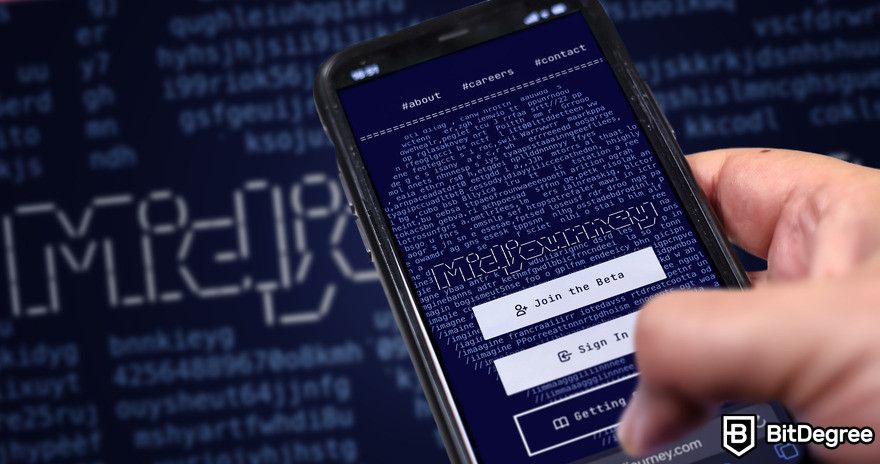
In the future artists and AI could work as a team, each bringing unique strengths to the table – human creativity and emotional intelligence combined with the AI's processing power and data analysis capabilities.
The role of designers and artists is likely to transform, with a greater emphasis on guiding and refining the output of AI tools. If you want to be among the best ones, you have to know how to master Midjourney quickly!
How to Learn Midjourney From Scratch: The Best Generative AI Learning Courses
To become the best AI creators, it is important to master Midjourney quickly. If you're starting from scratch, there are several excellent generative AI learning courses available to help you. These courses are designed to provide you with an understanding of the principles and techniques behind generative AI, allowing you to leverage its full potential.
Midjourney Mastery: Create Visually Stunning AI Art (Enroll Here)

- Platform: Udemy
- Duration: 3 hours
- Price: $15.99
- Certificate: Yes
- Level: Beginner
- Discount: Available
- Where to apply? HERE
Midjourney Mastery: Create Visually Stunning AI Art is a broad and engaging online course designed for artists and enthusiasts who wish to learn how to use Midjourney AI. Rated at 4.3 out of 5 by close to 12,000 students, this course offers everything about Midjourney from start to finish.
The course includes lifetime access and a certificate of completion and is accessible on any device. It not only shares knowledge about the technical aspects of creating AI art but also covers the commercial side, teaching you how to use Midjourney to monetize your AI art.
What you'll learn:
- Fundamentals of AI art creation: You'll start with the basics of AI art, understanding how to use Midjourney to create unique and impressive artwork.
- Mastering Midjourney: The course will guide you through all the tools and features of Midjourney, ensuring you gain a comprehensive understanding of this platform.
- Creative experimentation: Learn to experiment with different styles and prompts, such as "metallic tiger fur patterns," "robot fruits," or different cyberpunk themes. This also includes mastering text prompts for stylization and experimental art.

- Advanced techniques: Explore more refined aspects like composition and lighting, focusing on how to use Midjourney for professional-quality AI art.
- Monetization strategies: This course also focuses on how to sell your AI art online, including tips for promoting and automating your art sales.
- Practical applications: Find out how top companies are using AI art and how you can apply gained knowledge in a professional context.
If you ever wondered, “How does Midjourney work?” this course is exactly for you. Analyze its potential and transform it into a profitable skill.
Midjourney for Beginners: Craft an Exquisite Piece of AI Art (Enroll Here)

- Platform: Coursera
- Duration: 2 hours
- Price: $9.99
- Certificate: Yes
- Level: Beginner
- Discount: Available
- Where to apply? HERE
Midjourney for Beginners: Craft an Exquisite Piece of AI Art course offered on Coursera, focuses on how to use Midjourney without prior skills. Taught by the proficient instructor Rudi Hinds, this course is designed to teach you the skills to create and optimize AI-generated art.
As part of Coursera Plus, this course offers a review of Midjourney's features, including blend mode, permutation prompts, and aspect ratio adjustments. This course is ideal for people interested in the intersection of art, technology, and AI and seeking to deliver industry-standard digital creations.
What you'll learn:
- Install and navigate Midjourney: Setting up Midjourney and creating a new server to fully utilize its AI tools for art creation.
- Generate and optimize artwork: Use Midjourney's advanced features, such as remix mode and permutation prompts, to generate varied versions of artwork.
- Prepare artwork for commercial use: Adjust and save images in different aspect ratios and formats, ensuring they meet industry standards for digital platforms.

- Free to use
- Add-ons for Microsoft Word and Chrome
- Wide selection of tools
- Extensions for Chrome and Edge browsers
- Some tools are free
- Easy to use

- Supports over 120 voices in 20 languages
- Live customer support
- Voice cloning feature
- Voice cloning
- Emphasis and pauses
- Background music

- Easy to use
- AI-powered tools
- Cross-platform integration
- Multitrack editing
- AI-powered editing
- Accurate transcription
Generative AI Fluency (Enroll Here)

- Platform: Udacity
- Duration: 7 hours
- Price: From $249/month
- Certificate: Yes
- Level: Beginner
- Discount: Available
- Where to apply? HERE
The Generative AI Fluency course begins with the basics, introducing foundational concepts and terminology, then advances to explore specific applications such as large language models (LLMs) for text generation and diffusion-based models for image creation.
It covers a wide range of topics, including the mechanics of LLMs, AI image generation techniques, and the practical usage of tools like DALL-E and Midjourney. The course concludes with insights into deploying generative AI in real-world scenarios, covering essential aspects like data collection, prompt execution, and system maintenance.
What you'll learn:
- Understanding generative AI: including key terminology and basic concepts.
- Knowledge of LLMs: large language models’ application in text generation.

- Practical skills in using generative AI: image generation tools such as DALL-E and Midjourney.
- Strategic approaches to implement Generative AI: focusing on data handling, prompt execution, and maintenance in production.
The course is taught by experts like Uohna Thiessen, a data scientist, and AI interaction strategist; Rohan Viswanathan, an ML researcher; and Giacomo Vianello, a principal data scientist, bringing a fortune of knowledge and practical learning experience.

Did you know?
Have you ever wondered which online learning platforms are the best for your career?
Conclusions
As a parting thought, it's important to acknowledge the transformative impact of Midjourney on digital art. It doesn't just introduce a new way of creating art, but it also sparks a wider conversation about the role of AI in the creative process.
Midjourney goes beyond being a technological advancement; it's a catalyst for reimagining the potential of digital creativity. So why not join the Midjourney community? Whether you're an experienced artist looking to incorporate AI into your work or a newcomer curious about digital art, Midjourney offers you a platform to experiment, learn, and create.
This exploration isn't just about making art; it's about taking part in an ever-evolving exchange between technology and creativity. Ready to see where your imagination can lead you? Get started today! Join one of the exciting courses and unlock the endless possibilities of your creativity. Remember, with tools like Elevenlabs and Midjourney, the boundaries of what's possible are constantly expanding
The content published on this website is not aimed to give any kind of financial, investment, trading, or any other form of advice. BitDegree.org does not endorse or suggest you to buy or use any kind of AI tool. Before making financial investment decisions, do consult your financial advisor.
Scientific References
1. Piskopani A.M., Chamberlain A., Ten Holter C.: 'Responsible AI and the Arts: The Ethical and Legal Implications of AI in the Arts and Creative Industries';
2. Limano F.: 'Implementation of Artificial Intelligence Based Image Creation Technology for Conceptual Ideas in 3D Visual Modeling'.

